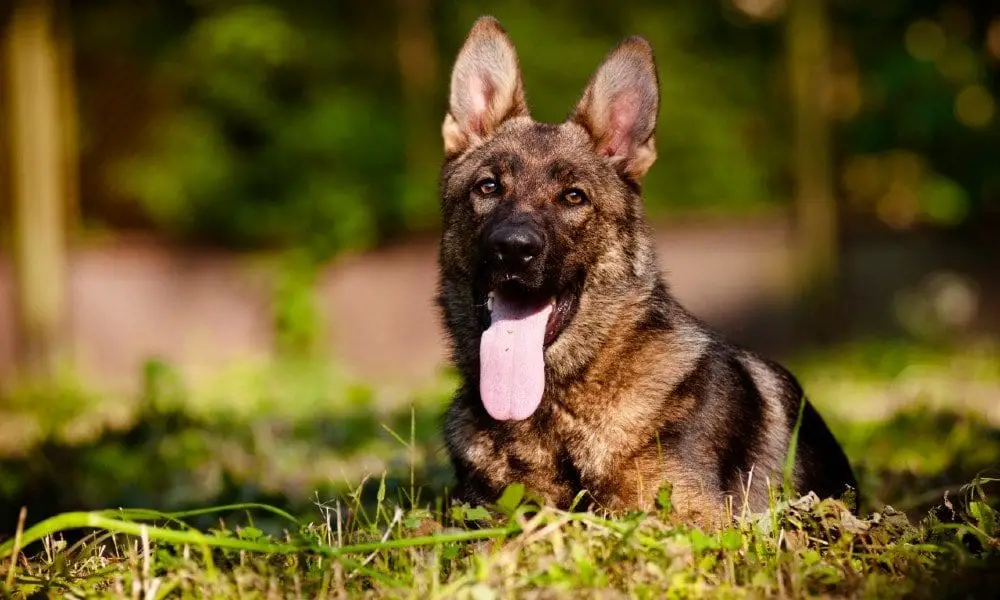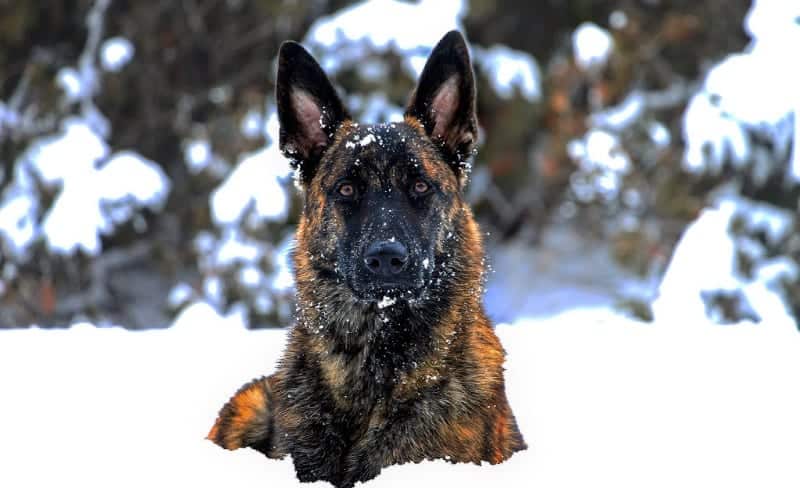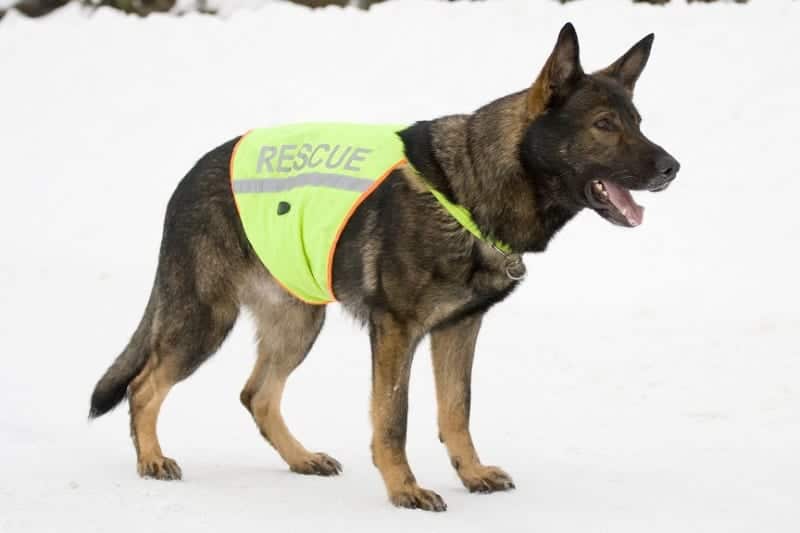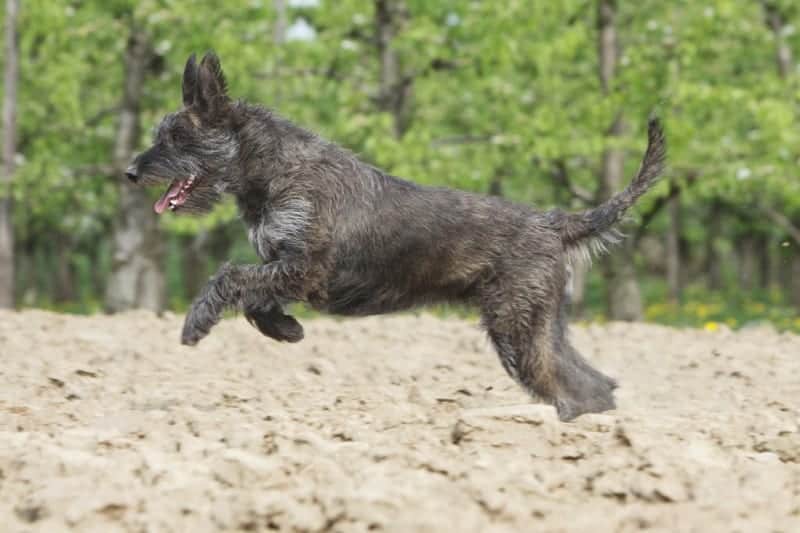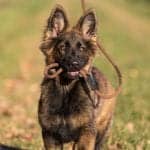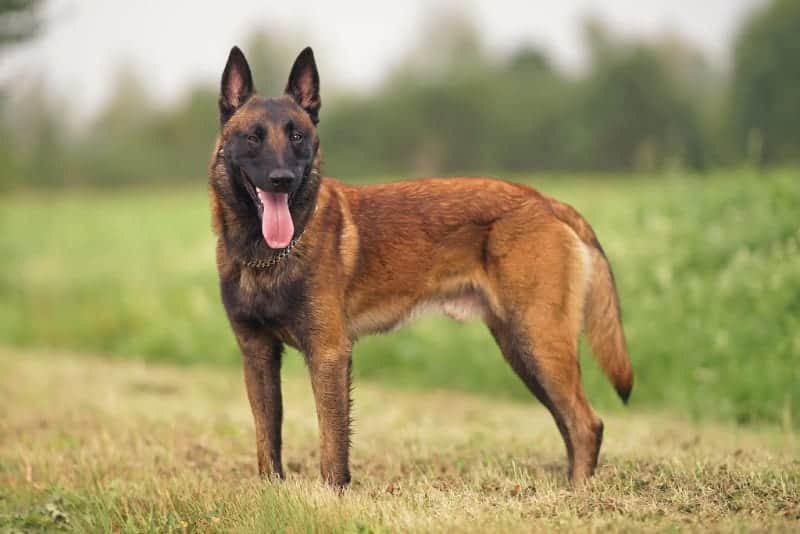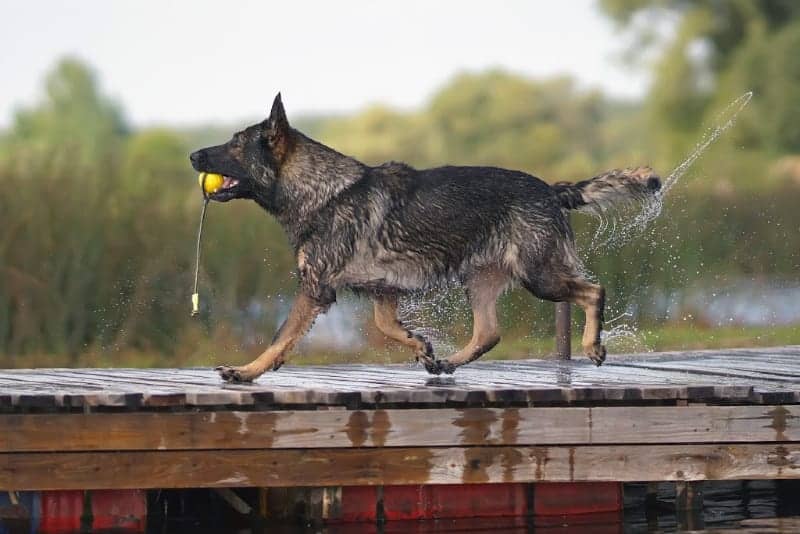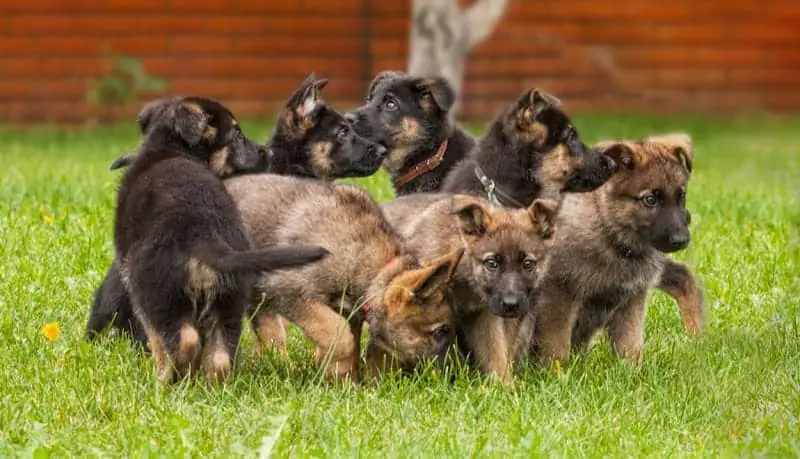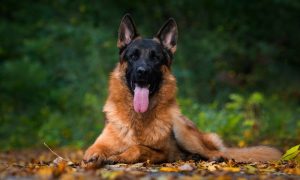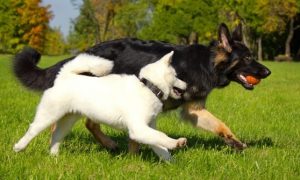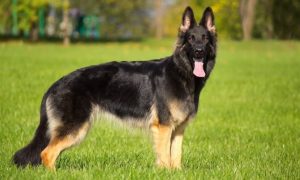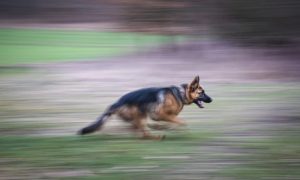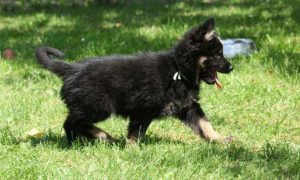The Sable German Shepherd is, technically, just a color variant of the regular German Shepherd.
Most conformation show breeders and pet breeders focus on producing red or tan dogs with a black saddle and muzzle.
The sable German Shepherd genetically comes from working line dogs.
Working line German Shepherds differ significantly from conformation line (American line) German Shepherds. They tend to be smaller, have less angulation in the hind end, and have straight, not roached, backs.
The crucial distinction between the two types is not just their looks but their behavior.
Working line dogs are unflappable, supremely confident, intelligent, high drive dogs that mental stimulation and a job to do.
Most conformation line dogs have had their drive, and working instincts breed out of them. While they make excellent pets, they don’t have what it takes to excel in police/military work, search and rescue, personal protection, or sport work. German Shepherds from working lines are preferred for these tasks.
The sable color variant can is similar to the color of a wolf. The muzzle is all black, and there is a varying degree of black over the dog’s entire body. Underneath the black and mixed in with the black coloration, the dog’s fur is usually red or tan, but it can also be gray.
History of the Sable German Shepherd Dog
The German Shepherd is an artificial breed deliberately developed in Germany around 1899 by a man named Max von Stephanitz. His goal was to produce an exceptional working dog that could undertake any task asked of it, even potentially dangerous jobs.
He bred for strength, stamina, work ethic, intelligence, loyalty, and confidence. These traits are still alive today in working line German Shepherds.
The initial breeding program involved some local sheep-guarding dogs. There were four documented out-crossings to wolves. Then, the dogs were line-bred and carefully selected. There was no concern at all about the color of the dogs during this process.
Unfortunately, due to the high level of inbreeding during the creation of this breed, some inherited conditions became rather common. These conditions include hip and elbow dysplasia, degenerative myelopathy, and degenerative spinal stenosis. Dedicated breeders work to eliminate these conditions from their lines.
Genetic testing of dog breeds has revealed that practically all of the herding breed dogs like collies and Belgian Shepherds cluster closely together, suggesting they all descended from the same ancestral group. German Shepherds are not closely related to them.
The native livestock guarding dog type used to develop the German Shepherd appears to have gone extinct during the second world war. It has never been DNA tested, and its origin is unknown.
The only breed that the German Shepherd is closely related to is the Berger Picard, a large shaggy-coated herding breed that was naturally developed in France.
Picards are described as independent, extremely confident problem solvers, traits that they may have shared with the ancestral stock used to produce the German Shepherd Dog.
The early German Shepherds attracted the attention of the military, and the breed soon became well-known as the first choice of the Nazis for guarding and other military duties.
Although Belgian Shepherds were the first police dogs ever, German Shepherds are preferred by many police departments due to their larger size and calmer temperaments. German Shepherds are also a popular choice for search and rescue tasks.
The sport of Schutzhund was explicitly developed to test individual German Shepherds to see if they had all of the qualities a German Shepherd should have. The sport has three components: obedience, tracking, and protection (guarding and attacking on command).
Unlike similar sports such as Ringsport, the dogs are expected to work independently in some exercises and make decisions about attacking the bad guy on their own. Schutzhund heavily emphasizes obedience at all times.
Genetics of the Sable Color
Sable is dominant over the black and tan/red color variant. What this means is, if you breed two black and red dogs together, you will never get sable puppies. However, since sable dogs can carry the black and red gene, you can get some black and red puppies if you breed two sable dogs together or breed a sable dog with a black and red dog.
Both sable and black and red are dominant over the pure black color variant. Because it is very recessive, the black gene can be carried for generations and then suddenly manifest as one black pup in a litter of sables or black and reds.
Differentiating Between the Belgian Malinois and the Sable German Shepherd
Although superficially similar in appearance and used for the same tasks (police, military, sport work), the Belgian Malinois and the German Shepherd have distinct differences. A Belgian Malinois can be a solid red or tan with a black muzzle, or they can be sable. Many people find it difficult at first glance to distinguish between the two breeds when they are both sables.
Physically, the major difference between the two dogs involves their build. German Shepherds are built more prominent than the Belgian Malinois. Male dogs of either breed should be 24 to 26 inches at the withers, but a 26-inch male German Shepherd will typically weigh 80 to 90 pounds while a 26-inch malinois is generally only 65 to 75 pounds.
The other pronounced difference between the breeds is their hind end structure. The Belgian Malinois has a classic “endurance trotter” canine build, being just slightly longer than they are tall, with a level back, and their hind end angulation matches their front end angulation.
German Shepherds have a unique build among canines. They are significantly longer than they are tall, and their hind ends are more angulated than their front ends, which causes their back to slope downwards from the withers towards the tail.
This peculiar structure allows them to perform a very flashy extended trot. Conformation line breeders have exaggerated these traits to the point that the dogs can’t do anything except perform a flashy trot.
The breed standard calls for a straight back with only a moderate slope and moderate over-angulation of the hind end. Many conformation line German Shepherds these days have a severely roached back and a severely over-angulated back end, which is always a topic under criticism and debate.
There are many temperament differences between German Shepherds and Belgian Malinois. Belgian Malinois are often described as “German Shepherds on crack” and are frequently referred to as “Maligators” due to their propensity to bite first and never ask questions later.
Is a Sable German Shepherd Dog Right for You?
You should never select a breed of dog based only on its appearance or color. First, you need to research the German Shepherd Dog. Next, determine if a working-line German Shepherd is right for you and your lifestyle
If you expect your dog to spend its days sleeping on the couch and lounging in the back yard, a working-line German Shepherd is not for you. These dogs are genetically programmed to work. They need socialization, obedience training, pack structure, and a lot of exercise.
If you are interested in getting involved in search and rescue, competitive obedience, or sport work, a working-line German Shepherd is the right choice. If you prefer the sable color, you will need to do some research on finding Sable German Shepherds or breeders.
How to Find a Reputable Sable German Shepherd Breeder
The best way to find a reputable German Shepherd breeder is through word of mouth and research.
If you don’t know anyone with a Sable German Shepherd, you can try networking. There are sable German Shepherd groups on Facebook and search for working dog sport clubs in your local area to meet other sable enthusiasts.
Another resource is to google Sable German Shepherd breeders in your area. Always research breeders even if they have been recommended. Click here to learn how to distinguish a good breeder from a bad one.
If you purchase a puppy or dog from a breeder, make sure both parents have been tested for elbow and hip dysplasia and have also been DNA tested to ensure they aren’t carriers of degenerative myelopathy.
Sable German Shepherds end up in shelters and rescue organizations if you’d prefer to adopt. This option might take some patience for the right color and right dog.
Bookmark your local shelter and regularly check for new dogs looking for homes.
Click here for a list of German Shepherd Rescue Organizations in the United States.
If you’re ready for a Sable German Shepherd, you won’t be disappointed by this magnificent and loyal breed.

